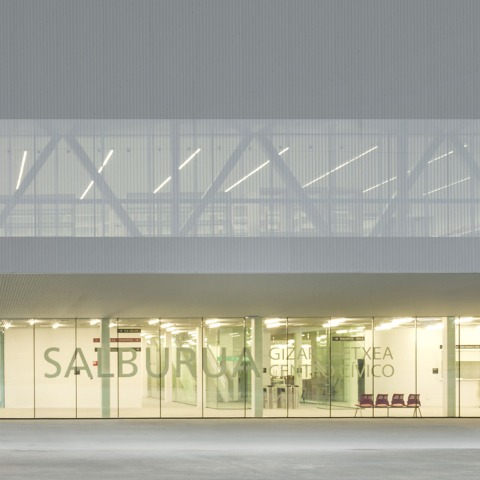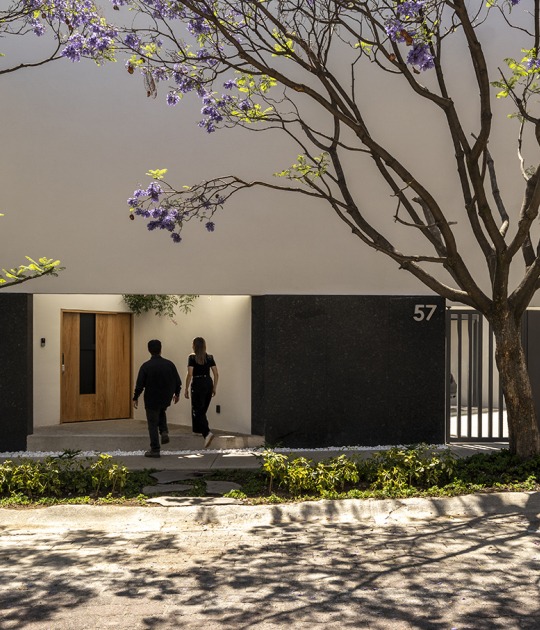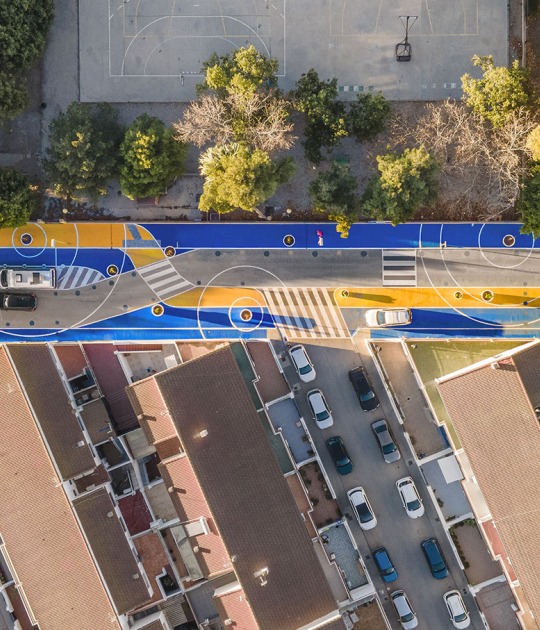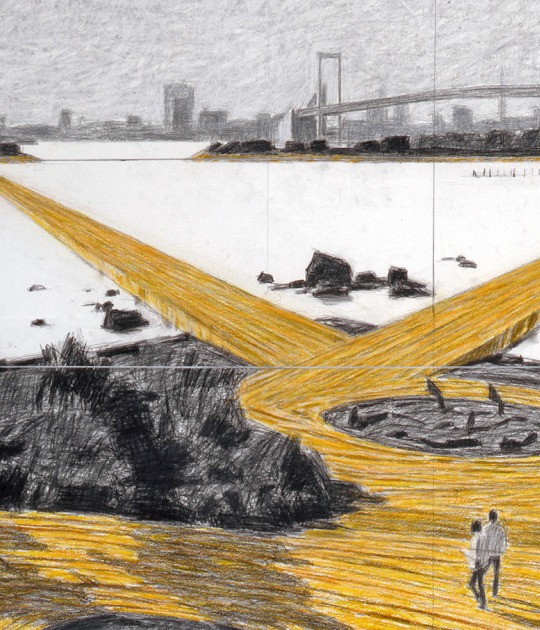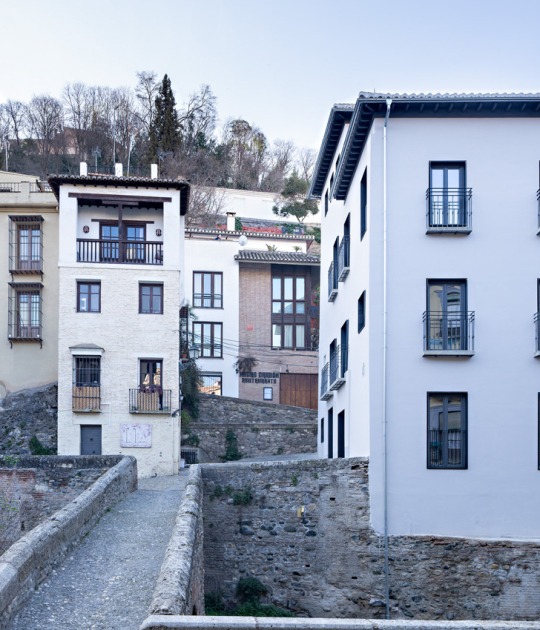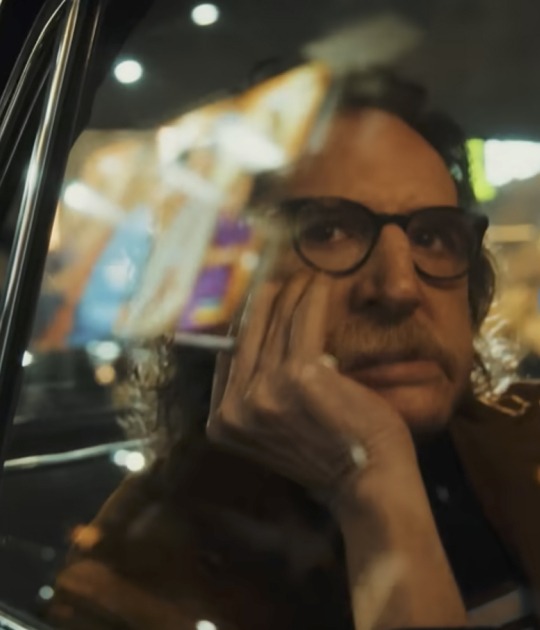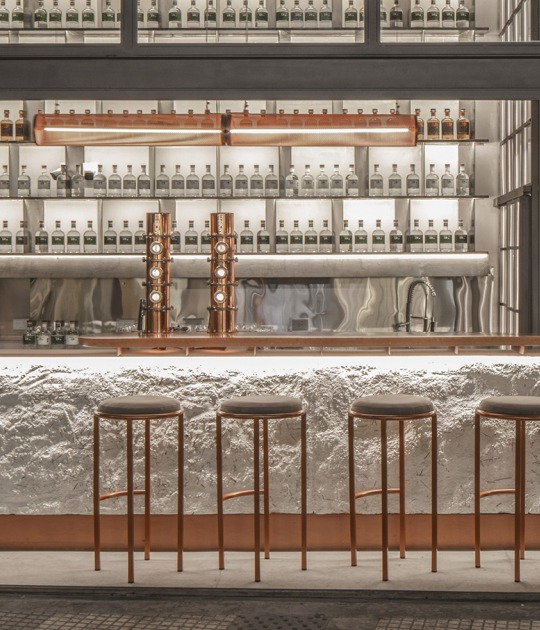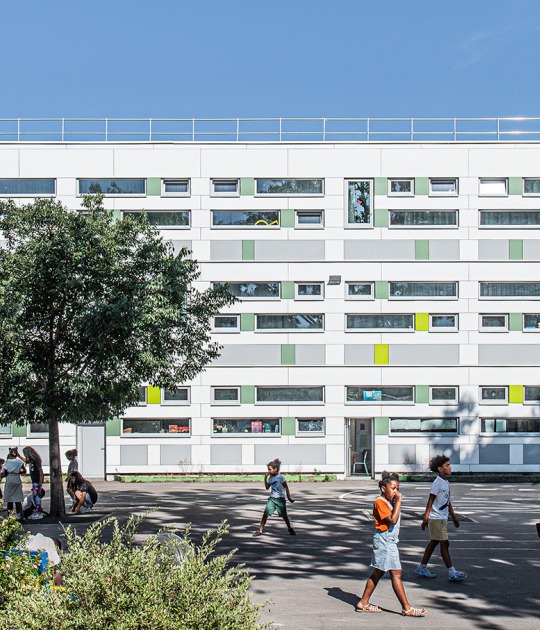The center, designed by the architect Gonzalo Carro, from the ACXT practice, is surrounded by a green outdoor recreation area. The building contains a very heterogeneus program that distributes the different activities within according to the degree of privacy required. A convergence between the urban image of the building with the functional necessity of organizing activities is therefore made. The ground floor is planned as an open space with great visual communication between the outside and the inside of the building. There is where the social program is hosted: cafeteria, auditorium, sport stands, etc.
In the upper two floors, on the contrary, the activities have a greater need for privacy: library, study room, swimming pools, changing rooms, etc. The project plays with transparency, lights and colors to give an identity to each of the rooms that make up the building.
Description of the Project by ACXT
The Civic Center is a building that combines sporting, cultural and administrative uses to service the neighborhood Salburua in Vitoria.
The project conceives the civic center as a gathering of people to carry out various social, cultural, recreational or sports activities.
The program of the building is divided into three levels:
- The ground floor has more public uses such as a café, lounge, hall, conference room, etc.
- The basement has all sports facilities except for the pool.
- The first floor has administrative areas, cultural spaces (library, study room, Infotek and workshops) and the pool with its own dressing room.
The floor conveys this concept of diffusion thanks to a glass façade through which you can see what is happening inside, and even across the street, establishing a fusion between urban space and inside the civic center, strengthening its public character.
In contrast, the first floor has a less permeable, more abstract language, avoiding the usual human scale, in order to obtain a stronger and more powerful image.
